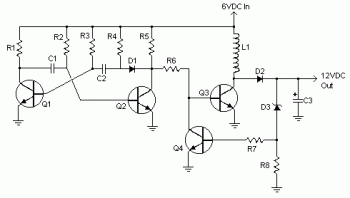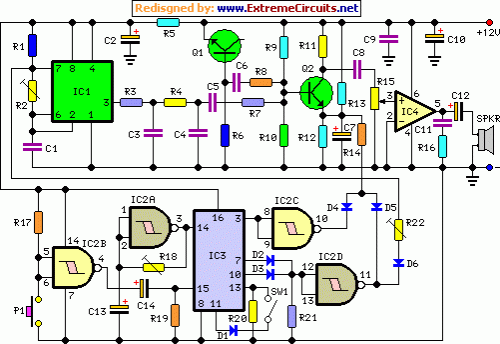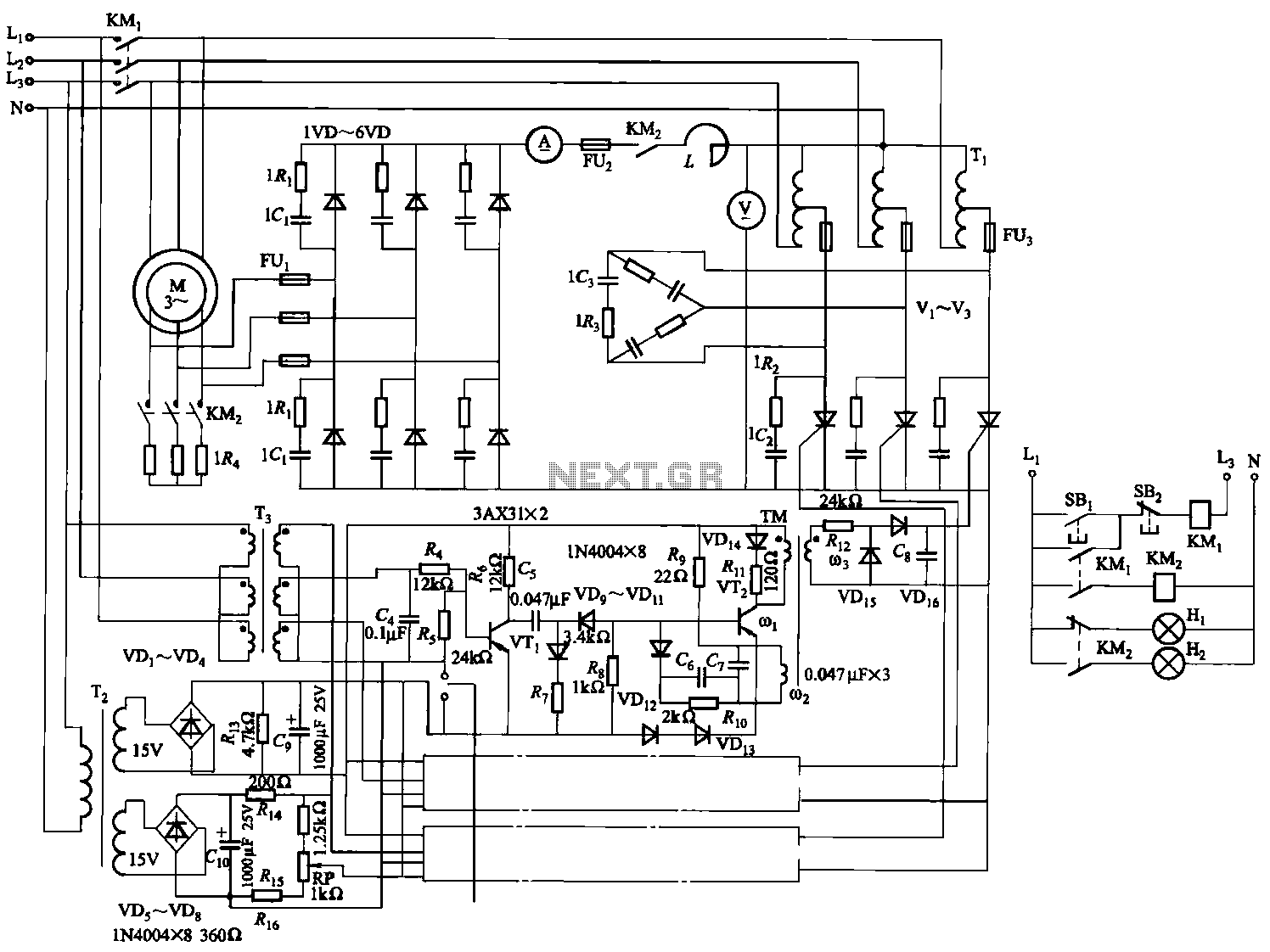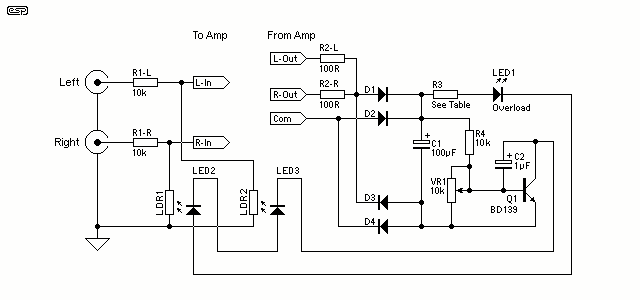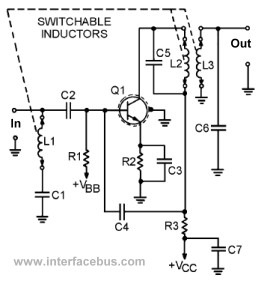
Audio input selector circuit (4416 CMOS)
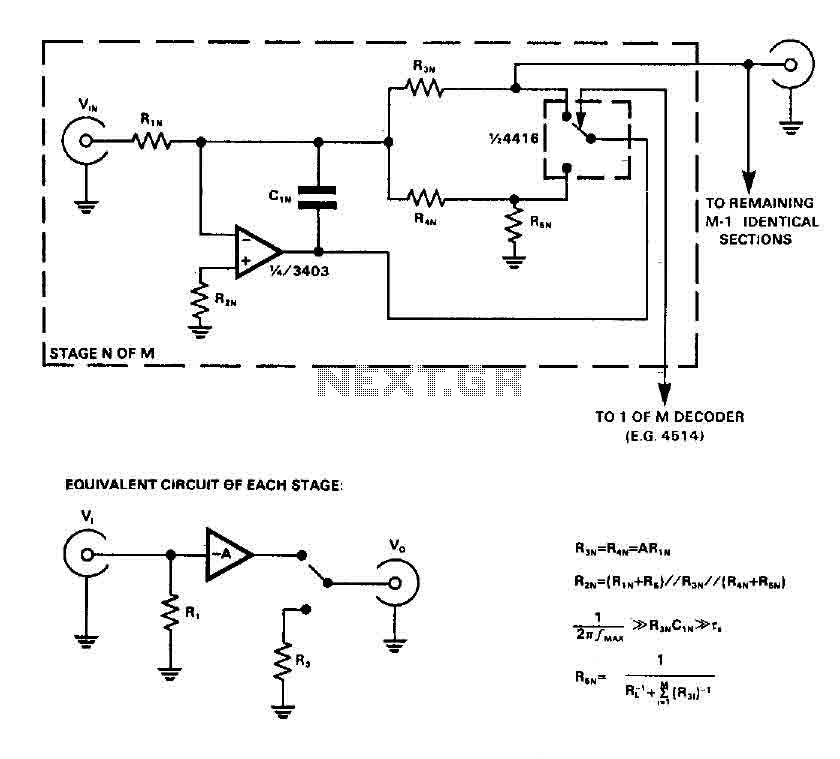
CMOS switches are utilized to select entries in audio circuits. While these switches can introduce unacceptable levels of distortion, incorporating them into the feedback network of an operational amplifier (op amp) can effectively minimize this distortion. The circuit employs a CMOS switch 4416, configured as two independent single-pole double-throw (SPDT) switches. If switching transients are not a concern, components R5 and C1 can be omitted, and R4 may be short-circuited. It is essential to maintain a return path even when a channel is turned off to keep the inverting input of the op amp at ground potential and to prevent excessive crosstalk between channels.
In audio circuit design, CMOS switches, such as the 4416 model, are integrated to facilitate the selection of different audio sources or signals with minimal distortion. The operational amplifier's feedback network plays a crucial role in maintaining signal integrity. By placing the CMOS switch within this feedback loop, the circuit can effectively counteract the distortion typically introduced by the switch itself.
The configuration as two independent SPDT switches allows for versatile routing of audio signals, enabling the selection of one of several inputs while maintaining a consistent output. This design choice enhances the flexibility of the circuit while ensuring that the audio quality remains high.
When considering the components of the circuit, R5 and C1 serve as a low-pass filter that can mitigate switching transients. However, in applications where these transients do not impact performance, these components can be removed to simplify the design. R4, which may be short-circuited, is often used to set a specific bias point or to stabilize the circuit under certain conditions.
Maintaining a return path is critical to ensure that when one channel is switched off, the inverting input of the op amp remains at ground potential. This is vital in preventing crosstalk, which can lead to undesired interference between channels, thereby preserving the clarity and fidelity of the audio signals. The overall design of the circuit, with careful consideration of component placement and configuration, is essential for achieving optimal performance in audio applications.CMOS switches are used directly to select the entries in the audio circuits, it can introduce unacceptable levels of distortion, but if the switch is included in the feedback network of an op amp, the distortion due to the switch may be virtually eliminated. The circuit uses a CMOS switch 4416, arranged as two independent SPDT switches. If switching transients are unimportant, R5 and C1 can be omitted, and R4 may be short-circuited. However, a return path must be maintained even if a channel is turned off, to keep the inverting input of op amp to ground potential, and avoid excessive crosstalk between channels. 🔗 External reference
In audio circuit design, CMOS switches, such as the 4416 model, are integrated to facilitate the selection of different audio sources or signals with minimal distortion. The operational amplifier's feedback network plays a crucial role in maintaining signal integrity. By placing the CMOS switch within this feedback loop, the circuit can effectively counteract the distortion typically introduced by the switch itself.
The configuration as two independent SPDT switches allows for versatile routing of audio signals, enabling the selection of one of several inputs while maintaining a consistent output. This design choice enhances the flexibility of the circuit while ensuring that the audio quality remains high.
When considering the components of the circuit, R5 and C1 serve as a low-pass filter that can mitigate switching transients. However, in applications where these transients do not impact performance, these components can be removed to simplify the design. R4, which may be short-circuited, is often used to set a specific bias point or to stabilize the circuit under certain conditions.
Maintaining a return path is critical to ensure that when one channel is switched off, the inverting input of the op amp remains at ground potential. This is vital in preventing crosstalk, which can lead to undesired interference between channels, thereby preserving the clarity and fidelity of the audio signals. The overall design of the circuit, with careful consideration of component placement and configuration, is essential for achieving optimal performance in audio applications.CMOS switches are used directly to select the entries in the audio circuits, it can introduce unacceptable levels of distortion, but if the switch is included in the feedback network of an op amp, the distortion due to the switch may be virtually eliminated. The circuit uses a CMOS switch 4416, arranged as two independent SPDT switches. If switching transients are unimportant, R5 and C1 can be omitted, and R4 may be short-circuited. However, a return path must be maintained even if a channel is turned off, to keep the inverting input of op amp to ground potential, and avoid excessive crosstalk between channels. 🔗 External reference

